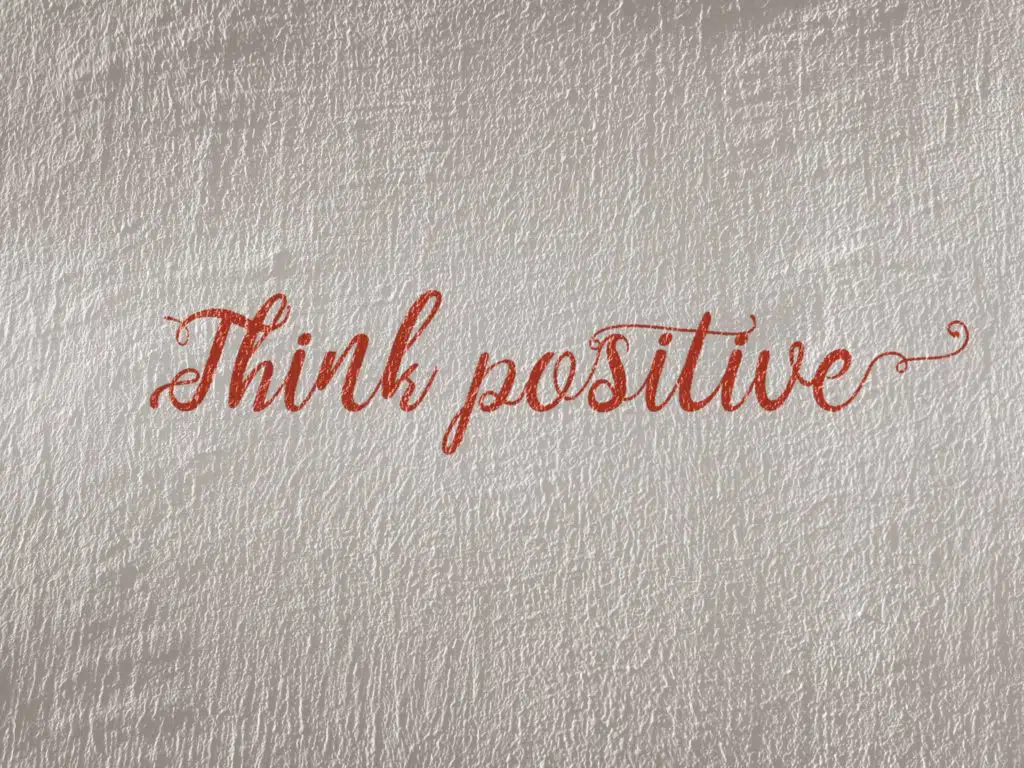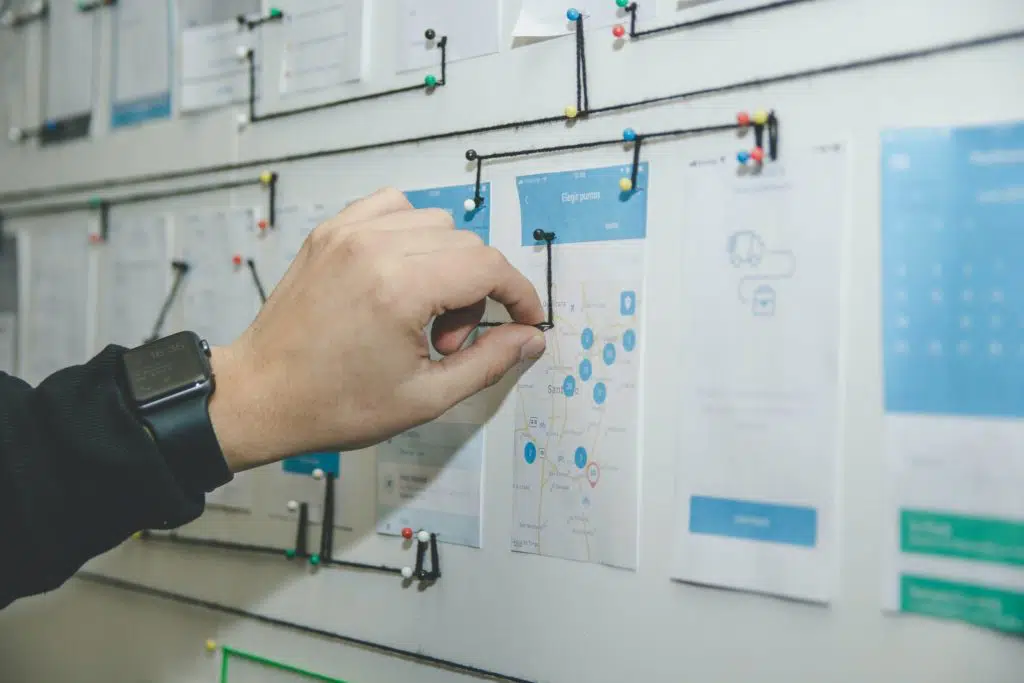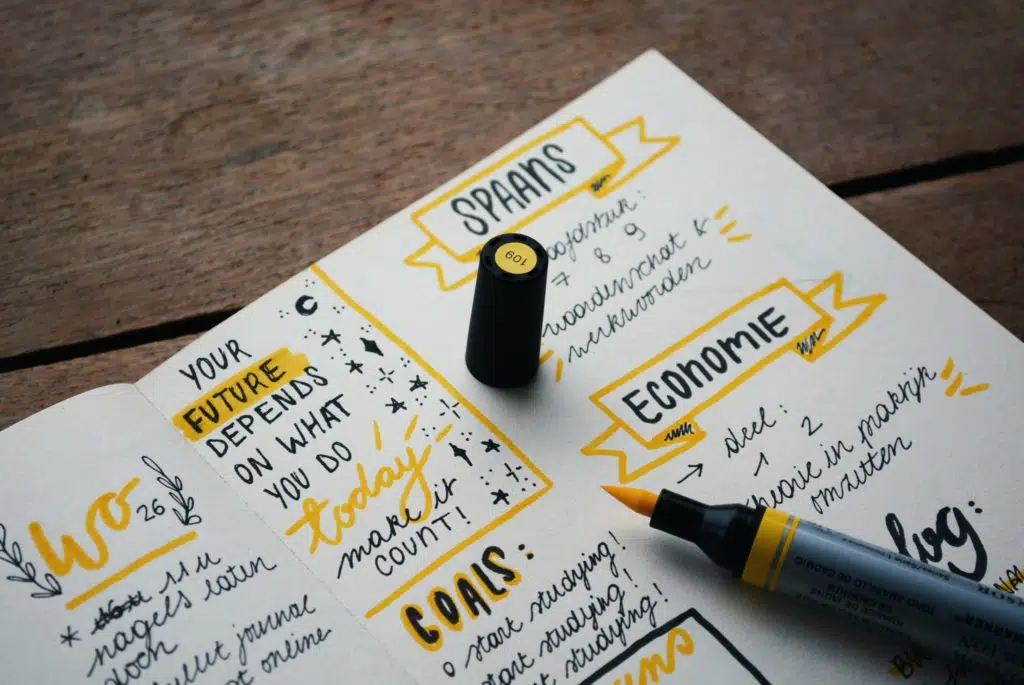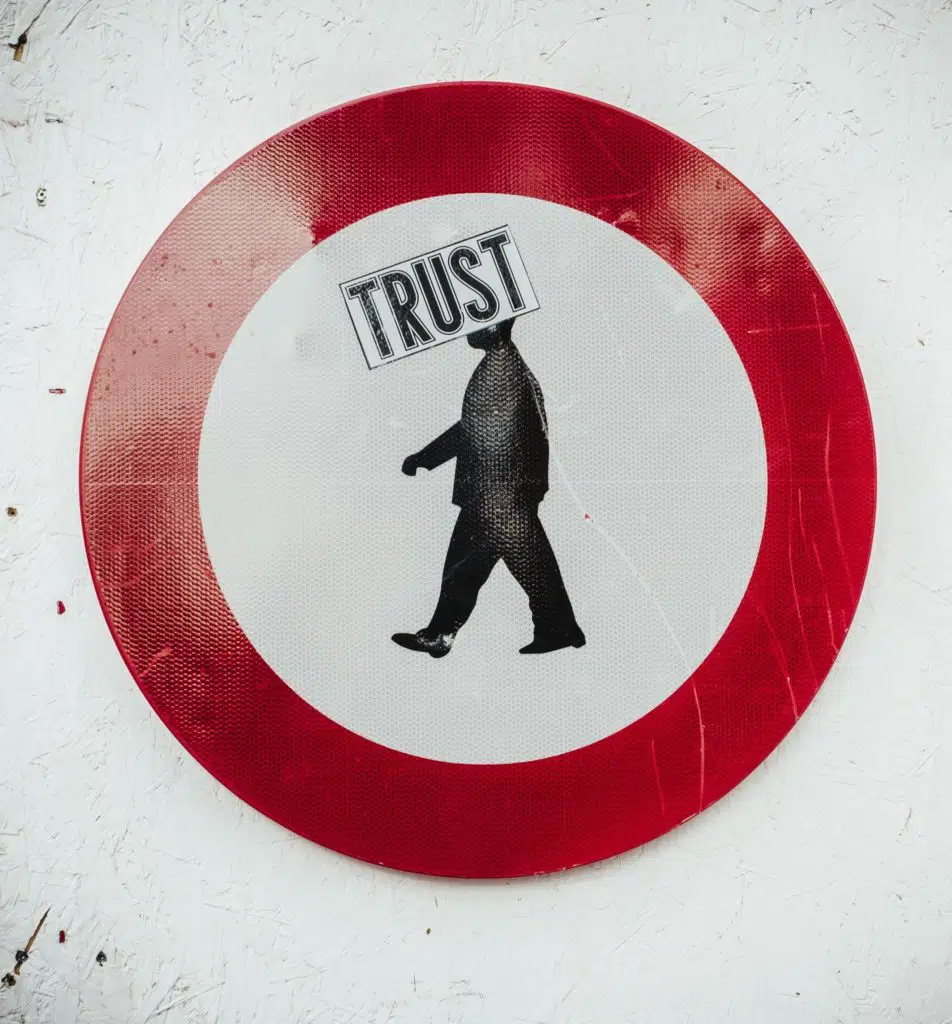Coaching sessions play a major role in any coaching business. If you are unable to connect with the client in the session, then all your efforts will go in vain.
It is not that easy to convince your client that he/she can undergo the much-needed transformation through a coaching session which merely lasts for an hour or two.
Thus, you must follow the right way to conduct your coaching session so that the client can find value in it. The sessions should be fruitful and interesting. You should be able to provide a unique perspective to the client so that he/she can revive that spark of zeal.
To simplify your work, today I am going to tell you some very important tips that can help in better structuring your coaching sessions.
How should you start? How to direct the conversation in the right way? What to say and what not to say? How to conclude? – Whatever your question may be, get ready to obtain all the answers.
So, let’s begin!
- Be clear with your goal before all your coaching sessions
- Focus on the session: background and groundwork
- Set the right atmosphere for your coaching sessions
- Getting into the right frame of coaching
- Define rules at the beginning of your coaching sessions
- Start with a positive note
- Structure your coaching sessions by opting for a coaching model
- Be open
- Develop trust
- Listen actively
- Seek to understand
- Say what needs to be said
- Guide the conversation in your coaching sessions
- Capture key points during your coaching sessions
- Be flexible with different kinds of personalities
- Demolish obstacles
- End your coaching sessions on a positive note
- Set expectations for follow up
- Evaluate and plan
- Be prepared to be challenged
- Frequently Asked Questions (FAQs)
Be clear with your goal before all your coaching sessions
Before the beginning of your coaching session, the very first thing that you should do is- Set a clear goal. I sometimes ask my coachee what they want to get out of the session. This makes sure that both of us are on the same page and helps in defining the real objective of the session.
At times the coachee has a lot of stuff that is difficult to manage in an hour or so. In this case, we refine it together to meet something manageable in the said time frame.
Concentrate to chunk things down and prioritize main points so that you land on some crucial and fruitful takeaways by the end of the session.
Focus on the session: background and groundwork
Sometimes it is great if you as a coach are prepared with the groundwork. This means calling or emailing the client beforehand to fetch a quick outline of the areas around which the session needs to revolve.
You may also get certain docs which can help you in getting a hold on the situation and crafting coaching questions for the session. This way you can orient to context and curtail the basic narrative during the coaching session.
Set the right atmosphere for your coaching sessions

Don’t try to squeeze your coaching session between two planes at an airport. The session requires a professional ambience. Find a quiet place with no disturbance and a high internet speed connection (very important in case of online coaching sessions).
Ambience plays a very important role in making the client feel comfortable. The surroundings should not include multiple things that cause distraction.
I generally don’t prefer a round table conference type of a setting. If you want your client to share the stuff with you frankly then you need to provide him/her that soothing comfort. Try to reduce the distance between both of you so that you can better communicate.
Cut all sorts of distraction and concentrate thoroughly on the client. It gives the impression that you genuinely care and are eager to solve the issue.
Getting into the right frame of coaching
To get your client into the right frame, it is important that first, you yourself are into one. This may mean differently to different coaches. I get to the physical space a little before then the coachee.
I try to trim all my mental chatter and prepare myself so that I can carefully observe the coachee- the energy, behavioral change, what is told and what remains untold etc. I make sure that my mind is alert so that I can be more observant and helpful to the coachee.
Define rules at the beginning of your coaching sessions
Defining rules before any coaching session is very important. This helps to ensure that your coaching session runs smoothly and it is not reduced to a ‘meaningless chat’.
If you are taking group coaching sessions then it becomes even more crucial. You need to lay down the rules at the beginning itself otherwise it would be all chaos. For instance, in the case of group coaching, the rules may include- How long the session would last? Would you invite volunteers to speak or only you would be the lead speaker? Will there be some activities to better convey your point? Etc.
Start with a positive note

Well begun is half done. Your client is already dejected. If you would throw such statements like- “Why did you take that turn?” or ‘It was foolish to go that way.” then the entire pitch will get destroyed.
You need to start with something that is positive and gives confidence to the coachee. Consider applauding the client for something. You can appreciate his/her skills. It is always nice to give some positive feedback about their efforts. If you aren’t finding anything great to in the client to start with then I would suggest- “look deeper”.
Structure your coaching sessions by opting for a coaching model

When coaches start their coaching sessions (especially the new ones), they make a mistake of thinking that the sessions are going to be simple
question-answering round. The reality is that as soon as you start a session if things are not planned before then the session will eventually earn you nothing.
In order to set the right pace for your coaching session and ensure that it is aligned with your purpose, you should follow a coaching model. There are various coaching models that you can choose from according to the style of coaching that you are most comfortable with.
With a coaching model, it becomes easier to direct your coaching session in the right way so that you don’t underlook or overlook the details. It keeps you on the right track and guides you towards a fruitful conclusion.
At the same time, take care not to follow the coaching models slavishly otherwise they can become a constraining device instead of an enabling one.
Be open
If you want your client to openly share his/her problems with you then YOU need to open first. This may have several meanings.
Firstly, you can narrate some incidents from your personal experiences that resonate with the client’s perspective.
Like:
“This happened with another client of mine too, this ain’t that unusual” or “Once I experienced a similar situation where…” This way the client can connect with you soon as he/she can smell resemblance.
Secondly, being open means, to be honest, and transparent with your client, when you ask honest and thought-provoking questions that give you more meaningful results.
Questions that merely welcome an answer in either YES or NO seldom fetch you details about the situation. It is only when you ask open-ended coaching questions that you can fetch a broader picture of the scenario.
So, the final takeaway is you are not an interviewer but a coach who is armed with great equipment to bring a transformation in your client. That is what you are being paid for. Try to make the best of the coaching sessions by openly asking, suggesting, advising, and praising the client.
Develop trust
My philosophy is- Triumph in Trust. I could create a solid presence in my niche because I always value my clients. I cherish my relationships with them and share a special personal bond independent of the commercial perspective.
You need to establish yourself as a trusted resource in front of your client. At the same time, a true coach would never make the client dependent on himself/herself.
There are two different things- Motivation and Realization. The strength lies not in motivating but making your client realize why the transformation is important and how to achieve the same. Motivation lasts for a short-time but realization if conveyed well can last life-long.
To make your client REALIZE your intentions, first, you need to build that strong mutual connection whose foundation is made up of TRUST.
Have a look at these 5 ways that can help you to build a trusting coaching relationship.
Listen actively
When I begin my coaching career I thought that the equation of coaching sessions was- Clients ask and then I advise while they listen to me with due attention.
Unfortunately, it doesn’t work that way. Soon you will realize that most of the clients already have the answers to their problems. It’s just that they are searching for a safe person to talk about them so that they can unveil what they already know.
Listening well is not just enough. You need to convey this to the client too.
Look straight into the eyes of your client while listening. Be mentally awake. Don’t keep preparing your mental rebuttal.
Use a body language that depicts that you are interested in listening. Sit a bit forward when the client speaks nod when needed. Encourage the speaker to continue. Use words like- “alright”, “pretty good”, or nod along with them.
Sometimes the only thing that a person craves for is someone who can listen to him/her. If you can provide this to your client, he/she will want to meet you again to get the same experience.
Seek to understand
Before you impart any wisdom to your client he/she needs to be understood. Your task is to assist them in “emptying out” before they can take in anything else.
This is only possible when you encourage them to speak their heart out and loud. Thereafter listen patiently without judgement. You would be tempted to teach, correct and advice while listening to what your client is speaking. Avoid that temptation, instead, welcome more information.
You will progress as a coach only when your client feels fully understood. Let your client talk and then ask clarifying questions.
Say what needs to be said
Once the client has emptied out everything it’s your turn. Be kind and honest. No matter how hard you try to hide the truth it would be visible. Moreover, it doesn’t do any justice to your client to hide what your honest feedback is. No matter how difficult it would be for your client to hear, tell him/her what the actual situation looks like but in a gentle way.
Now that you have given your client the gift of hearing, he/she is ready to listen to whatever you have to say. Fill him/her up with your wisdom. Take care that you are not being too direct, harsh or commanding in your tone. The bitterest truth can appear sweet if conveyed in the right manner.
Guide the conversation in your coaching sessions
As a coach, you are the boatman! If you will not put your efforts to direct the boat correctly then it would take more time to reach the bank (it may become impossible too at some moment).
For instance, consider that you are an executive coach and you have come to coach some employ towards the achievement of their professional goals. Soon you realize that the person is talking less of his/her own situation and rather using that time to do one of the following:
- Talking about some third person
- Finding justification in judging the actions of others
- Venting about a situation without admitting any fault of his/her own.
Now, these kinds of discussions are not going to help anyone especially the person in front. Here comes your role. If you are just nodding then the employee would take this further. You need to find a way (the correct way) to gently take a U-turn towards your main objective. If you are not sure how to have the perfect conversation, have a look at this 5 Cs of a great coaching conversation.
Capture key points during your coaching sessions
If you capture points during a caching session then you can come back anytime and reflect on the same. This not only acts as a record of your session but also helps in preparation of the next session.
I sometimes capture the keywords which the clients use. This reflects their attitude and personality.
The style of noting questions can vary- few coaches bullet as they go, others only write action points. Some coaches also use pictures as reminders.
You can also ask your clients to complete a reflection afterwards by sending them a template or a set of questions as prompts of thought that they can resend to you.
Be flexible with different kinds of personalities
As a coach, you will meet diverse personalities. You will find that it is easy to communicate with some whereas some are really tough to proceed with.
Clients can be introverts that are not accustomed to being frank enough. Few others can be restless and restrictive towards your advice/suggestions. There also can be clients who are very short-tempered, who easily lose their calm when you try to dig more into their personal lives. And the list goes on…
As a coach, you should be able to tackle all sorts of personalities. For that, you must be patient enough and know exactly how to deal with a specific kind of personality in the best manner.
Demolish obstacles
You have provided the perfect roadmap to your client for achieving his/her goal. Great, but don’t forget that you need to identify the obstacles in the coachee’s path and suggest ways to overcome them.
Spend some time during each session discussing every challenge that your clients feel is ahead of them. Then assist your clients to find ways to demolish each of them.
In this way, your clients would be able to fight the resistance and procrastination that deaccelerate their path towards achieving their goal.
End your coaching sessions on a positive note
Just as you made the beginning perfect, take care that you conclude too beautifully. Praise your clients for all their efforts so far. Emphasize their skills and uniqueness. Guide them how they can use their extreme prowess to easily overcome the situation. Encourage future efforts.
Thank them for their valuable time. Make them feel good for sharing all the information with you and reiterate what great difference they can bring by committing to continuous improvement.
According to me, positive reinforcement is the best tool that a coach can apply. The major thing that people crave for throughout their lives is praise and recognition. Always end your coaching session on a positive note because the hard work is yet to come.
Apart from the above, you can have a look at these 10 tips to end a coaching session effectively.
Set expectations for follow up
You need not just end the coaching session on a positive note. Take a step ahead- set the expectations to follow up and check that the client take necessary actions to keep in pace with the goal.
Make an agreement with your client regarding the follow-up. Inspect and provide your inputs whenever necessary.
Try to understand a very important concept here- People don’t like to change easily. You might have met many people in your daily routine who want to lose weight, live their life more joyfully and yet they don’t change. This is a human tendency.
You need to break their cycle. Explain what is your goal behind the follow-up and when will you do that. Reach to a mutual conclusion. Avoid sounding pushy.
Convey to them that you are always there to help them out and through rigorous follow-up, you can ensure that the clients are fulfilling the gap between the current and desired state.
Evaluate and plan
The objective of your coaching session was already laid at the beginning of your coaching session. Now the time has come to gauge the success. See how far you were able to meet your targets.
You can also seek for client’s feedback at the end of the coaching session. Rather than engaging in a conversation, you can ask the client to fill a short survey form. You can ask the client to rate you and your session for different parameters. Additionally, you can ask for ways that the client think can be employed to enhance the further sessions.
Accordingly, plan for the future sessions. If the session went as per your expectations take care that you follow up to reach the end results. If it didn’t, curate ways to better perform soon.
Be prepared to be challenged
During the coaching sessions, your skills, knowledge, personality and attitude might be challenged. Pushing someone to take an inward look and think critically seldom welcomes criticism.
Remember that your client might not be that good in conveying, might not be in a good state of mind or might not be that comfortable with you in the beginning. At every point, during the session, your skills and expertise in your respective niche would be challenged and you will need to face that.
Create a solid foundation for yourself. Keep abreast with the recent industry trends, coaching habits, and ways to tackle different situations. Gradually as you meet diverse clients keep updating your database and building your skillset.
So, by now I am sure you could have got the answers to most of your queries. Next time you are having a coaching session keep the above tips in mind. They will fetch you some real outcomes. I am confident that you will nail your coaching sessions hereafter.
Frequently Asked Questions (FAQs)
What is a coaching session?
Coaching sessions are a form of one-on-one, verbal counseling that is designed to provide feedback and guidance to help people make changes in their life. Coaches can provide the necessary support and motivation to help their clients overcome any obstacles and meet their goals.
How do you frame a coaching session?
Framing coaching sessions is the first step in developing a coaching framework. It includes determining what you want to cover, how you’re going to cover it, and how you are going to incorporate what your client wants. The most important thing to remember is to be assertive, clear, and direct to make sure your session is productive.
How to prepare for a coaching session?
Take time to think of the big picture of what you want to happen, visualize yourself achieving these goals, and become excited about where this coaching session is leading you. You can also map out specific steps that need to be done prior to the coaching session. Keep a diary, journal, or notebook in which you can write down your thoughts and feelings in a space that’s just for you.
How to start a coaching session with an employee?
With the rise of the gig economy and constant employee churn, coaching has become increasingly important to maintaining high levels of performance. One way to start a coaching session with an employee is by asking them what they want to get out of the coaching and what they need from their manager.







ABOUT SAI BLACKBYRN
I’m Sai Blackbyrn, better known as “The Coach’s Mentor.” I help Coaches like you establish their business online. My system is simple: close more clients at higher fees. You can take advantage of technology, and use it as a catalyst to grow your coaching business in a matter of weeks; not months, not years. It’s easier than you think.
AS SEEN ON
0 Comment